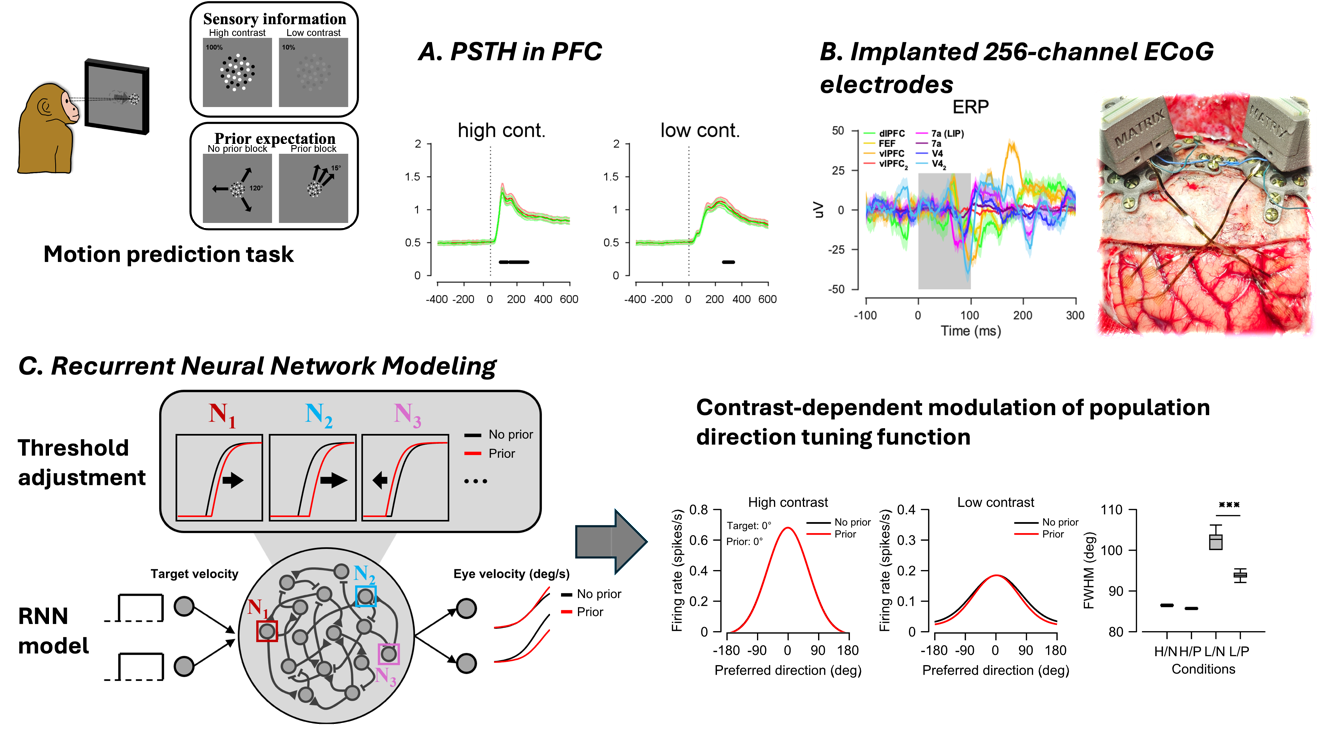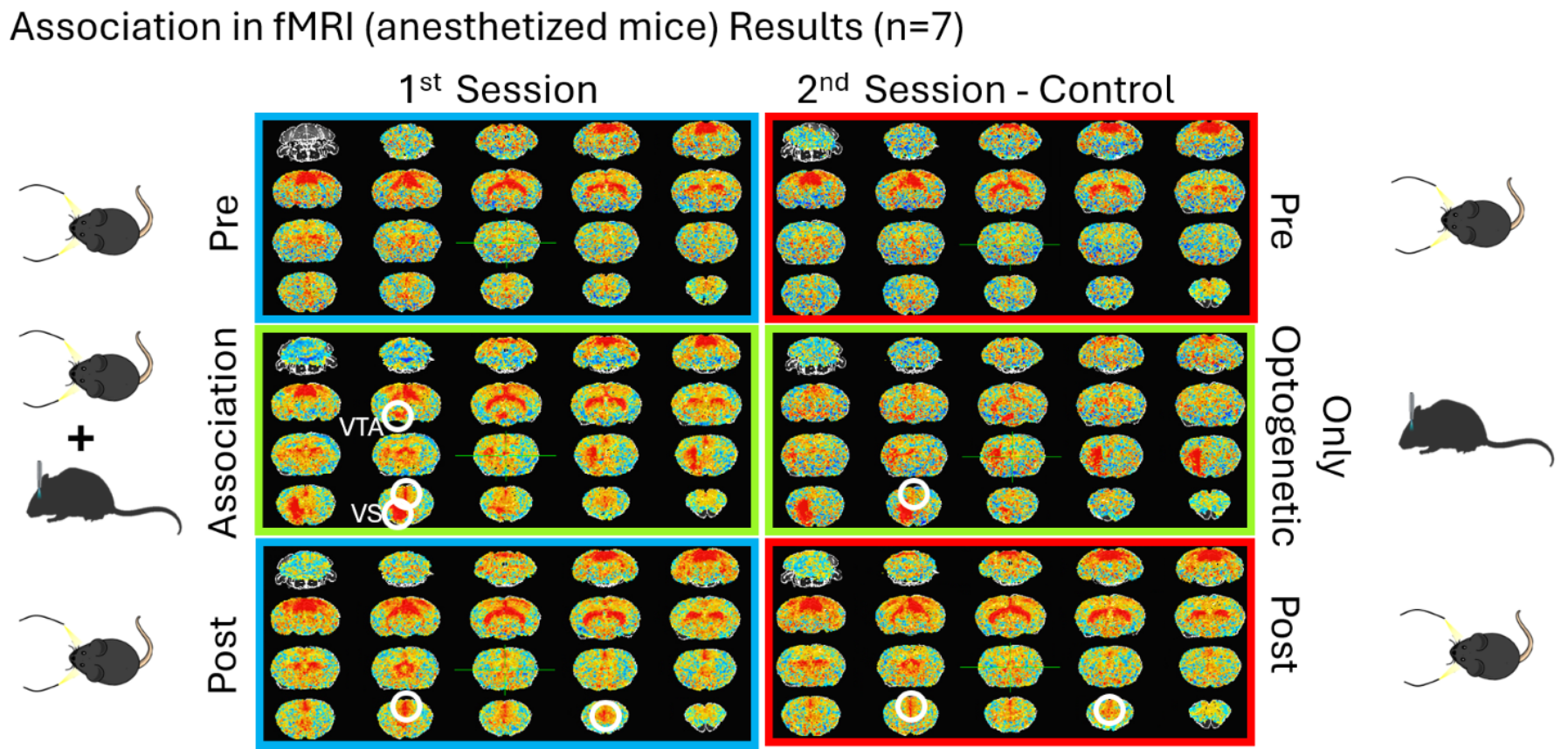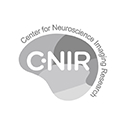Research
Systems & Intervention Neuroscience
The aim of the Cognitive Computational Neuroscience group is to understand how the prefrontal cortex, a brain structure that has some uniquely human features, contributes to perception, e.g. how we perceive the world. This can potentially shed light on the unique nature of human subjective experience, and may inform future models of artificial intelligence.
Systems and Intervention Neuroscience group
The Systems and Intervention Neuroscience group within the Cognitive Computational Neuroscience group led by Director Hakwan Lau focuses on developing new protocols for causal manipulation of brain activities in humans and non-human primates, and for inferring neuronal/circuit-level mechanisms using the relatively coarse-grain activity measured by fMRI. With these methods, the group aims to investigate the basic neurocognitive mechanisms for perception and memory, especially in the visual domain. Research in this group involves both humans and animal models, which are especially important for the validation of methods.
(1) Perception in action (Collaborating with Joonyeol Lee)
To investigate how predictive information about motion is integrated with sensory input to guide motor behavior, we collected neural data from the prefrontal cortex—specifically the frontal eye field smooth eye movement (FEF-SEM) region—while two monkeys performed a sensorimotor task in which the direction of upcoming sensory motion was manipulated. Additionally, we recorded neural activity simultaneously from the prefrontal cortex and area MT to examine the interactions between these regions. To further explore how information is transmitted and integrated across brain areas during prediction-modulated sensorimotor behavior, we implanted electrocorticography (ECoG, 256 channels) electrodes in multiple cortical regions of one monkey, including the prefrontal cortex, lateral intraparietal cortex (LIP), and area V4. While we were able to obtain some field potential data from these regions simultaneously, an unexpected flaw in the connector pedestal prevented us from acquiring reliable data sufficient for deeper analysis. To resolve this issue, we are currently developing an ECoG array with a biocompatible adhesive that ensures stable contact with the cortical surface despite its curvatures and sulci. This work is being conducted in collaboration with Dr. Donghee Son and Dr. Mikyoung Shin. Furthermore, we developed a recurrent neural network model to examine the cellular mechanisms underlying Bayesian integration of prediction signals with sensory input. Our results suggest that modulation of neuronal thresholds—achieved via tuned inhibition of membrane potentials—can explain the effect of prediction on motion-guided smooth pursuit eye movements and the population-level direction tuning functions observed in area MT.

(2) Neural substrates of associative learning in the prefrontal cortex (Collaborating with HyungGoo Kim)
We attempted to elucidate the brain areas involved in simple associative learning process. To achieve this, We conducted the association process using anesthetized mice inside fMRI scanner. The three phasese consist of visual stimulation, visual and optogenetic stimulation of VTA dopamine neurons, and the same visual stimulation again. We observed that significant activation in the anterior cingulat cortex (ACC), an area within the prefrontal cortex (white circle). Therefore, we further measured spiking neuronal activity. We found that the activities of single neurons in the ACC are modulated by dopamine stimulation, Dopamine underlies several functional roles, one of which is processing reward and salience. Classic studies by Goldman-rakic showed that dopamine receptor antagonist modulated performance of tasks that require working memory. Our results suggest that prefrontal cortex may play important role in containing eligability information about cue, thus implicated in association learning.


SELECTED PUBLICATIONS
- 1. Functional brain reconfiguration during sustained pain, Lee J.-J. et al. (2022), eLife, 11, e74463
- 2. When self comes to a wandering mind: Brain representations and dynamics of self-generated concepts in spontaneous thought, Kim B. et al. (2022), Sci Adv, 8, eabn8616
- 3. Individual variability in brain representations of pain, Kohoutová L. et al. (2022), Nat Neurosci, 25, 749–759
- 4. A neuroimaging biomarker for sustained experimental and clinical pain, Lee J.-J. et al. (2021), Nat Med, 27, 174–182
- 5. Toward a unified framework for interpreting machine-learning models in neuroimaging, Kohoutová L. et al. (2020), Nat Protoc, 15, 1399–1435
Understanding human brain functions requires multiple levels of mechanistic explanations underlying their biological substrates. Computational Neuroscience Team seeks to unveil integrated and fundamental principles for core brain computations that are involved in the cognitive functions of healthy and diseased brains. We tackle this question with multi-species and multi-level approaches, from single-cell level cellular network mechanisms to whole-brain level connectivity and cortical hierarchy, using electrophysiology, neuroimaging, in-silico simulations, and imaging biomarker development using machine learning. We put an extra emphasis on understanding the neural computation behind the probabilistic inference, learning and action of human and animal, through which we also aim at providing a principled understanding of various symptoms in atypical brain conditions such as autism spectrum disorders.

